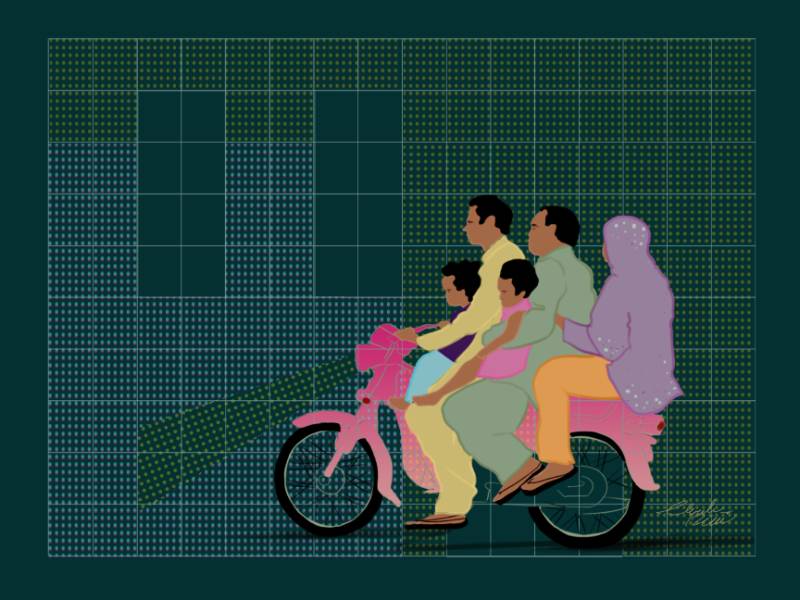
Seemab Raza narrates how artists responded to the devastating rains in Karachi. Over 160 artists from all over the world have donated their art to help the affectees in Karachi whose lives and livelihoods have been disrupted by the natural calamity
I was randomly scrolling down my Instagram feed when I stumbled upon a post by Artists for Flood Relief Karachi. The post was shared by Zehra Nawab who is a multidisciplinary artist from Karachi, working in illustration, journalism, theater, and film. She is also one of the contributors for a fundraiser that was started by her three friends: Numair Ahmed Abbasi who is an artist and writer living in Pakistan, Shaheen Jaffrani again an artist, curator, and designer in Pakistan and currently taking care of all the designing, layout, and advertising for the fundraiser, and Shanzay Subzwari who is pursuing her Masters in Fine Arts from the School of Art, Architecture, and Design, London Metropolitan University, United Kingdom. All these artists graduated in 2014 from the Indus Valley School of Arts and Architecture in Karachi.
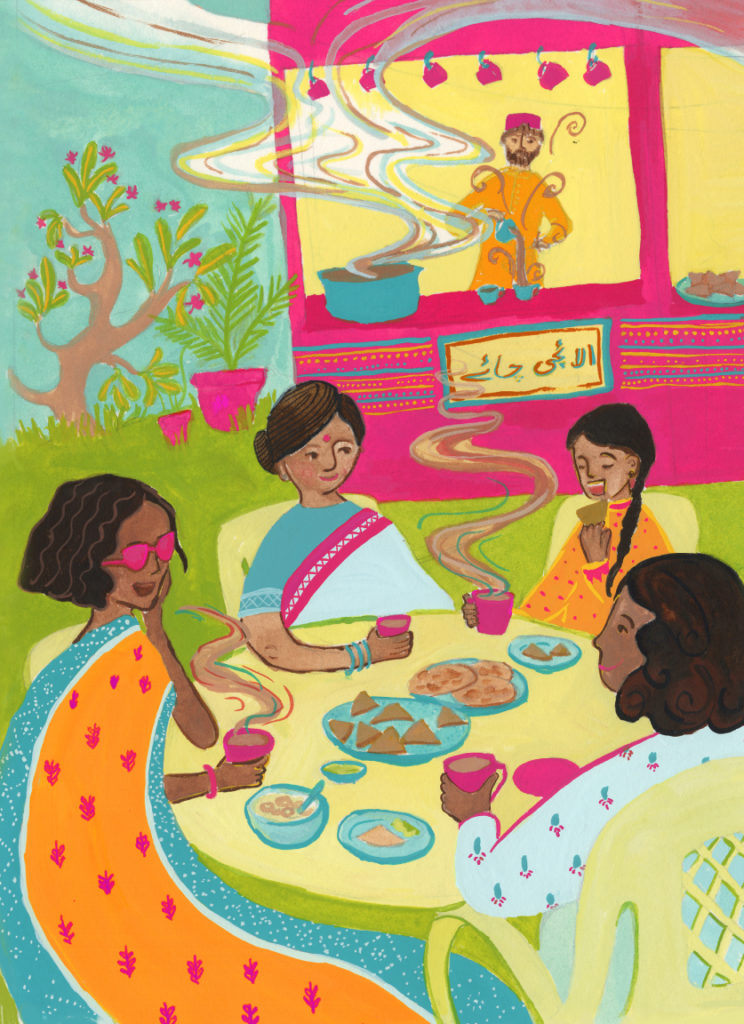
Karachi which is located along a natural harbor on the Arabian Sea has a population of sixteen million ninety-four thousand people. This year Karachi is hit by the worst monsoon rains breaking a ninety years record for the city. These numbers can explain the magnitude of the disaster caused by flooding. The redundant drainage system, ill-designed city spaces, poorly managed housing schemes like Naya Nizamabad which is built on the famous Manghopir Lake, and the worsening effects of climate change due to lack of sustainable energy resources are some of the many reasons affecting the lives of millions of people living in the biggest city of Pakistan. Sindh government takes heavy taxes from the people in the name of Water tax; however, the city has no available drinking water. Citizens are forced to buy drinking water sold by the Tanker mafia all over the city. There was a huge protest amid this disaster against the water tax, but instead of listening to the demands of the protestors, they were arrested.
The idea to utilize art as an aid in response to the extreme effects of the record-breaking monsoon rains in Karachi started in a WhatsApp chat on Thursday, August 20, 2020. On August 20, the rain started as a usual shower in Karachi. Numair Abbasi, who is a multidisciplinary artist and a freelance writer from Karachi, enjoyed the rain and listened to some music. At around 11 am, the electricity went out. Numair took it as a normal power failure which is routine in Karachi during heavy rains. He kept himself busy, but as soon as the sun started to set, Numair knew that this is not a normal rainfall. He starting posting on his social media pages about the unusual rain. The response to his social media posts from his friends was very upsetting. Numair’s friends started posting pictures from their houses where the basements were flooding. Some friends posted pictures of roads and streets looking like ponds or lakes. However, Numair who lives in Phase 7 in Defense Housing Authority, only witnessed a few inches of water accumulation is his basement.
The night went by and the electricity was resumed in Numair’s neighborhood by seven o’clock in the morning. He woke up and started calling his friends who told him the worst stories from their areas. Stories about incidents of people dying, evacuating their houses as the water level rose to destroy everything. Many were on roads with nothing to eat or drink. Numair started feeling restless in his comfortable home. The cool air from his air conditioner made him think about all those people forced to leave their homes due to flooding, and who were now on the road without any help. Numair told me that initially, he wanted to raise funds by selling his art, but then he called two of his best friends Shanzay Subzwari and Shaheen Jaffrani, and asked if they had some artworks that could be sold for raising funds for flood relief. They immediately said yes.
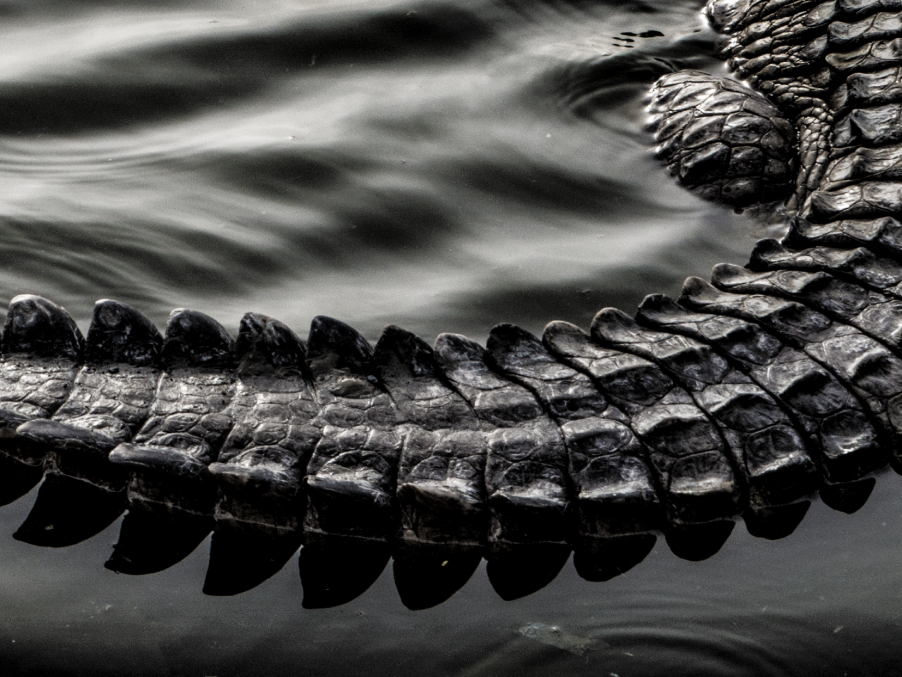
Shaheen, Numiar, and Shanzay did a conference call on Friday to further discuss the possibilities of selling their art for flood relief. After a detailed discussion, they decided to launch a fundraiser with the name Artists for Flood Relief on Instagram. On the eve of Saturday, August 22, the Instagram page for Artists for Flood Relief Karachi was launched. Within a few hours, the page received over a hundred to one twenty responses from their artist friends living in various countries. It was unbelievable. The three friends could not believe that what started as an idea was becoming a reality. The donors came from all walks of life. They were illustrators, photographers, formally taught artists, self-taught artists, painters, young students, photojournalists, dancers, doctors, architects, designers from Pakistan, non-Pakistani artists living abroad, artists from India, Iran, Norway, and also Pakistani diaspora living in different countries. The response was phenomenal.
The last date for submission was September 4. International donations were taken in digital format, and Pakistani artists were allowed to donate both digital and physical art pieces. The online fundraiser will continue until the 1st of October, 2020 through their Instagram page @artistsforfloodrelief. The digital art is being sold online and will be dispatched to the buyers once the fundraiser has ended. An auction will be conducted during the last three days of the fundraiser for physical art pieces with a starting bid of Rs. 15000. All digital art pieces however have a fixed price of Rs. 6000.
Fuji Films has partnered with AfFRK. Farwa Naqvi, the executive director of Fuji Films, is a friend and wants to help the organizers for making the printing task easy. Fuji Films will be providing archival prints for all the digital art pieces. The significance of archival prints is that the prints don’t fade off, are weather-resistant, and the photograph becomes a lifelong investment.
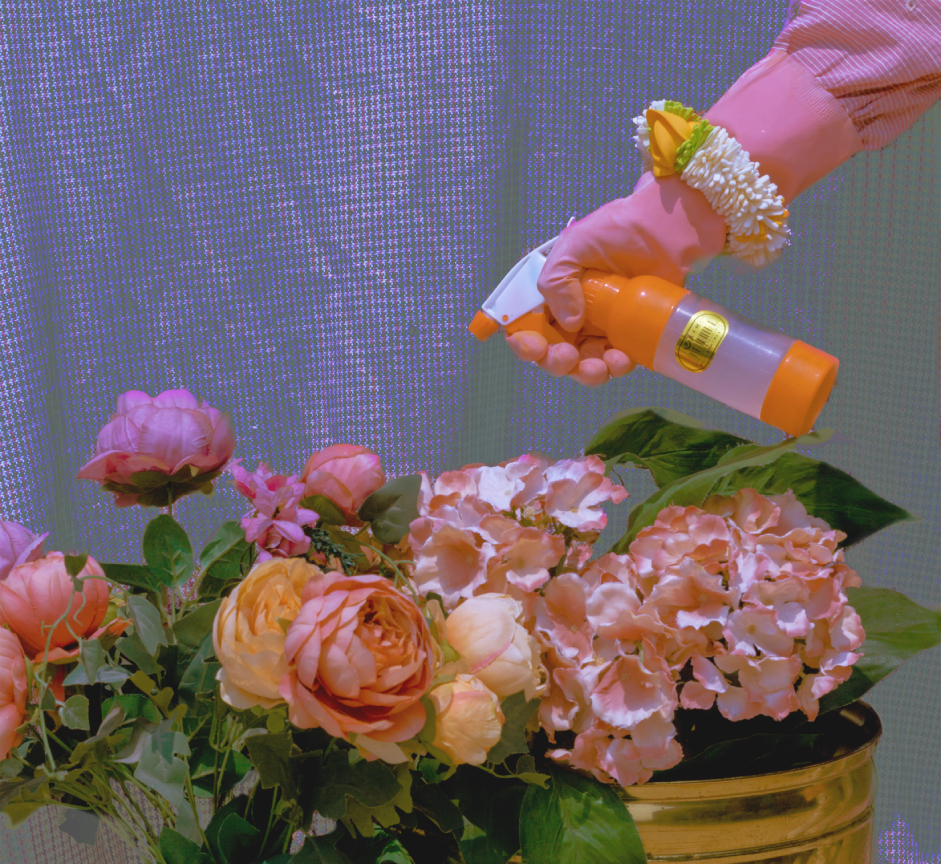
Artists for Flood Relief Karachi, later on, took another friend on board as a fourth member. Sarah Kazmi is an interdisciplinary artist, writer, and researcher living in Norway. She is currently an artist in residence at PRAKSIS’s 17th residency and has been selected as a fellow at RAW Academie Session 8 entitled Tour de Table in Dakar, Senegal. Sarah was already taking donations for Karachi flood relief when she read about Artists for Flood Relief Karachi online. She approached the organizers and they immediately collaborated with her. She is taking care of international funds, and corresponding to international buyers.
AfFRK has partnered with three organizations: Smile Sunshine, The Environmental, and Food for Thought. Sunshine Smile is a social responsibility initiative under Firefly. This organization is providing help in the fields of education, cleanliness, food, meal distribution, and societal development for Pakistanis. Smile Sunshine has been taking care of people from the start of the pandemic. Currently, this organization is providing prepared food and water to the people affected by flooding in Karachi.
The Environmental is an online platform for people who want to bring real change. They talk about environmental problems, the effects of climate change on the environment, and how to make the future sustainable. Currently, The Environmental is pumping water from areas under water due to heavy rains and also cleaning chocked drains with the help of another organization called GarbageCan.
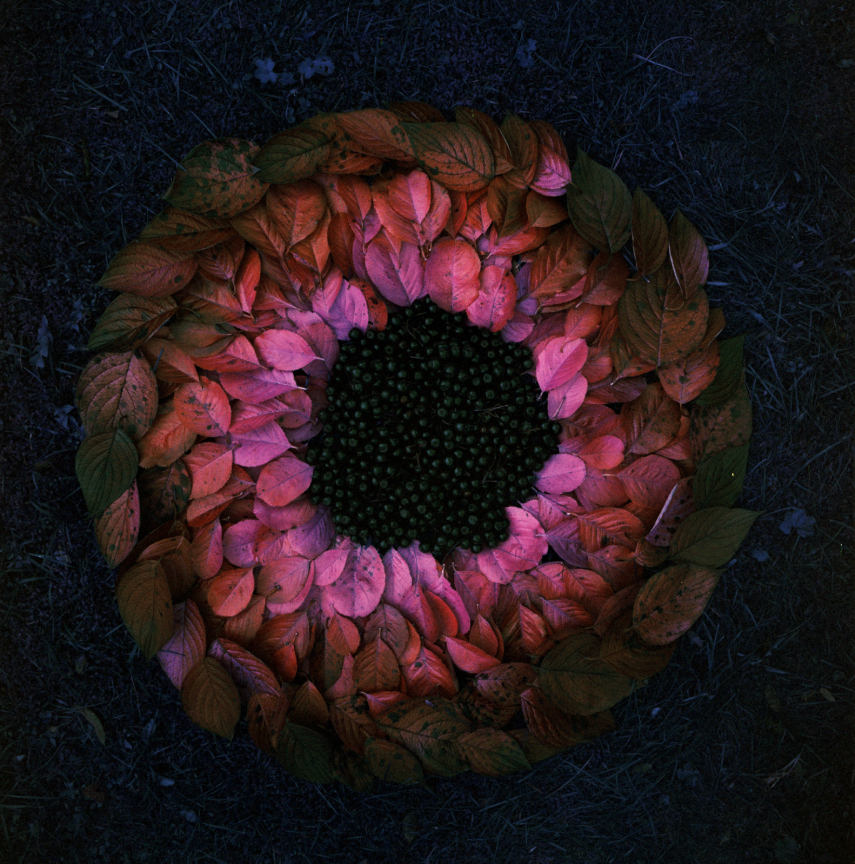
Food For Thought is the third organization that has partnered with AfFRK. FFT was established in 2015 and it makes sure that no one in Karachi goes to sleep empty stomach. Food For Thought has helped the city earlier in pandemic as well as the current situation by providing them with ration bags, basic amenities, and also household essentials for providing long-term rehabilitation.
Numair is taking care of all the submissions from Pakistan, Shanzay Subzwari is taking care of the Instagram page. All the designing, layout, and advertising is managed by Shaheeh Jaffrani, and Facebook correspondence is provided by Sarah Kazmi. Sarah has also set up a Go Fund Me page. She will be collecting donations from all over the world. From October onwards, the organizers with the help of their friends in the US will be dispatching all the digital art prints. I asked Numair why they chose to send the prints to the US for dispatching. He told me that shipping artwork from Pakistan is not an easy task and is rather expensive as compared to dispatching from the US. They want to save as much money possible so the funds can go to all those organizations that are helping people affected by this disaster. With the collaboration of these organizations, AfFRK is trying to create awareness and also help the people affected by flooding.
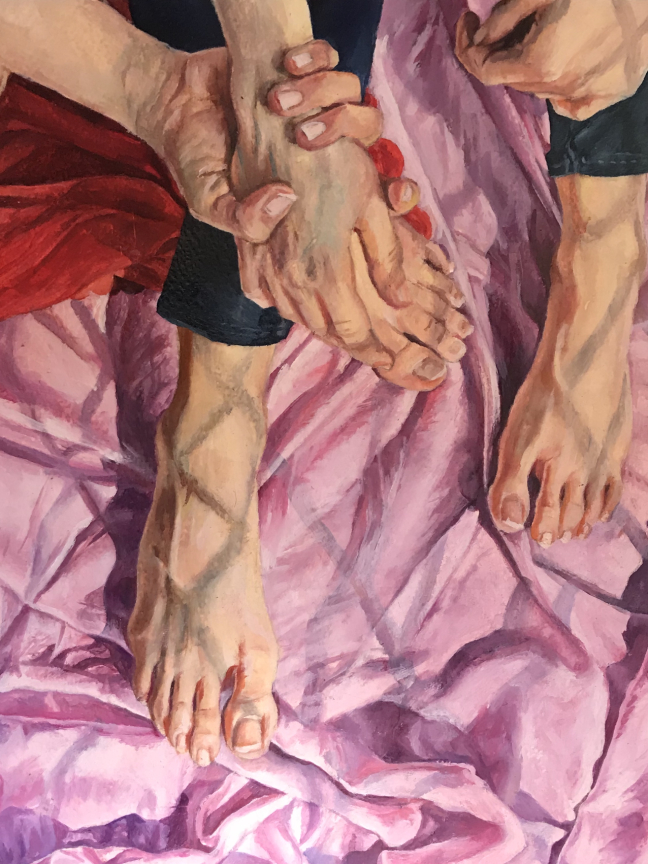
I also asked Numair if this was one of the first fundraisers of this kind, and also if the government has tried to contact them. He told me that this is not a new template. Earlier, Prints For Pandemic Relief was launched by Pakistani artists in New York to raise funds by selling art for COVID relief in Pakistan. Similar fundraisers have been launched in Peru, India, Sri Lanka, and Beirut. All these fundraisers gave an intuition to artists like Numair, Shanzay, Sarah, and Shaheen to follow the same path. The organizers have not been contacted by the government and they are running a purely self-led project, with the help of their artist friends. Numair added that artists are the most sensitive people and the idea that they live in their own world is a cliché. And this is so evident from this fundraiser where over one hundred and sixty artists from all over the world generously donated their art for this cause. The artists have projected pain, resilience, hope, and sufferings through their art. Another very important aspect of this campaign is that Numair, Sarah, Shaheen, and Shanzay were not personally affected by the flood, but they could not see their people in pain.
As Jerzy Kosinski has said “The principles of true art is not to portray, but to evoke”
Featured image above: Retro Savari, 2018, Alyzeh Rizvi, Dallas
I was randomly scrolling down my Instagram feed when I stumbled upon a post by Artists for Flood Relief Karachi. The post was shared by Zehra Nawab who is a multidisciplinary artist from Karachi, working in illustration, journalism, theater, and film. She is also one of the contributors for a fundraiser that was started by her three friends: Numair Ahmed Abbasi who is an artist and writer living in Pakistan, Shaheen Jaffrani again an artist, curator, and designer in Pakistan and currently taking care of all the designing, layout, and advertising for the fundraiser, and Shanzay Subzwari who is pursuing her Masters in Fine Arts from the School of Art, Architecture, and Design, London Metropolitan University, United Kingdom. All these artists graduated in 2014 from the Indus Valley School of Arts and Architecture in Karachi.

Chai Aunties, 2019, Mariam Quraishi, San Francisco
Karachi which is located along a natural harbor on the Arabian Sea has a population of sixteen million ninety-four thousand people. This year Karachi is hit by the worst monsoon rains breaking a ninety years record for the city. These numbers can explain the magnitude of the disaster caused by flooding. The redundant drainage system, ill-designed city spaces, poorly managed housing schemes like Naya Nizamabad which is built on the famous Manghopir Lake, and the worsening effects of climate change due to lack of sustainable energy resources are some of the many reasons affecting the lives of millions of people living in the biggest city of Pakistan. Sindh government takes heavy taxes from the people in the name of Water tax; however, the city has no available drinking water. Citizens are forced to buy drinking water sold by the Tanker mafia all over the city. There was a huge protest amid this disaster against the water tax, but instead of listening to the demands of the protestors, they were arrested.
The idea to utilize art as an aid in response to the extreme effects of the record-breaking monsoon rains in Karachi started in a WhatsApp chat on Thursday, August 20, 2020. On August 20, the rain started as a usual shower in Karachi. Numair Abbasi, who is a multidisciplinary artist and a freelance writer from Karachi, enjoyed the rain and listened to some music. At around 11 am, the electricity went out. Numair took it as a normal power failure which is routine in Karachi during heavy rains. He kept himself busy, but as soon as the sun started to set, Numair knew that this is not a normal rainfall. He starting posting on his social media pages about the unusual rain. The response to his social media posts from his friends was very upsetting. Numair’s friends started posting pictures from their houses where the basements were flooding. Some friends posted pictures of roads and streets looking like ponds or lakes. However, Numair who lives in Phase 7 in Defense Housing Authority, only witnessed a few inches of water accumulation is his basement.
The night went by and the electricity was resumed in Numair’s neighborhood by seven o’clock in the morning. He woke up and started calling his friends who told him the worst stories from their areas. Stories about incidents of people dying, evacuating their houses as the water level rose to destroy everything. Many were on roads with nothing to eat or drink. Numair started feeling restless in his comfortable home. The cool air from his air conditioner made him think about all those people forced to leave their homes due to flooding, and who were now on the road without any help. Numair told me that initially, he wanted to raise funds by selling his art, but then he called two of his best friends Shanzay Subzwari and Shaheen Jaffrani, and asked if they had some artworks that could be sold for raising funds for flood relief. They immediately said yes.

Manghophir Textures, 2018, Humayun Memon, Karachi
Shaheen, Numiar, and Shanzay did a conference call on Friday to further discuss the possibilities of selling their art for flood relief. After a detailed discussion, they decided to launch a fundraiser with the name Artists for Flood Relief on Instagram. On the eve of Saturday, August 22, the Instagram page for Artists for Flood Relief Karachi was launched. Within a few hours, the page received over a hundred to one twenty responses from their artist friends living in various countries. It was unbelievable. The three friends could not believe that what started as an idea was becoming a reality. The donors came from all walks of life. They were illustrators, photographers, formally taught artists, self-taught artists, painters, young students, photojournalists, dancers, doctors, architects, designers from Pakistan, non-Pakistani artists living abroad, artists from India, Iran, Norway, and also Pakistani diaspora living in different countries. The response was phenomenal.
The last date for submission was September 4. International donations were taken in digital format, and Pakistani artists were allowed to donate both digital and physical art pieces. The online fundraiser will continue until the 1st of October, 2020 through their Instagram page @artistsforfloodrelief. The digital art is being sold online and will be dispatched to the buyers once the fundraiser has ended. An auction will be conducted during the last three days of the fundraiser for physical art pieces with a starting bid of Rs. 15000. All digital art pieces however have a fixed price of Rs. 6000.
Fuji Films has partnered with AfFRK. Farwa Naqvi, the executive director of Fuji Films, is a friend and wants to help the organizers for making the printing task easy. Fuji Films will be providing archival prints for all the digital art pieces. The significance of archival prints is that the prints don’t fade off, are weather-resistant, and the photograph becomes a lifelong investment.

The aftermath of living in a post-pandemic world, 2020, Mahnoor Zahid, Karachi
Artists for Flood Relief Karachi, later on, took another friend on board as a fourth member. Sarah Kazmi is an interdisciplinary artist, writer, and researcher living in Norway. She is currently an artist in residence at PRAKSIS’s 17th residency and has been selected as a fellow at RAW Academie Session 8 entitled Tour de Table in Dakar, Senegal. Sarah was already taking donations for Karachi flood relief when she read about Artists for Flood Relief Karachi online. She approached the organizers and they immediately collaborated with her. She is taking care of international funds, and corresponding to international buyers.
AfFRK has partnered with three organizations: Smile Sunshine, The Environmental, and Food for Thought. Sunshine Smile is a social responsibility initiative under Firefly. This organization is providing help in the fields of education, cleanliness, food, meal distribution, and societal development for Pakistanis. Smile Sunshine has been taking care of people from the start of the pandemic. Currently, this organization is providing prepared food and water to the people affected by flooding in Karachi.
The Environmental is an online platform for people who want to bring real change. They talk about environmental problems, the effects of climate change on the environment, and how to make the future sustainable. Currently, The Environmental is pumping water from areas under water due to heavy rains and also cleaning chocked drains with the help of another organization called GarbageCan.

Void, 2017, Tuuka Pasenan, Helsink
Food For Thought is the third organization that has partnered with AfFRK. FFT was established in 2015 and it makes sure that no one in Karachi goes to sleep empty stomach. Food For Thought has helped the city earlier in pandemic as well as the current situation by providing them with ration bags, basic amenities, and also household essentials for providing long-term rehabilitation.
Numair is taking care of all the submissions from Pakistan, Shanzay Subzwari is taking care of the Instagram page. All the designing, layout, and advertising is managed by Shaheeh Jaffrani, and Facebook correspondence is provided by Sarah Kazmi. Sarah has also set up a Go Fund Me page. She will be collecting donations from all over the world. From October onwards, the organizers with the help of their friends in the US will be dispatching all the digital art prints. I asked Numair why they chose to send the prints to the US for dispatching. He told me that shipping artwork from Pakistan is not an easy task and is rather expensive as compared to dispatching from the US. They want to save as much money possible so the funds can go to all those organizations that are helping people affected by this disaster. With the collaboration of these organizations, AfFRK is trying to create awareness and also help the people affected by flooding.

The flesh searches for something more than flesh, 2020, Fatima Tahir, Lahore
I also asked Numair if this was one of the first fundraisers of this kind, and also if the government has tried to contact them. He told me that this is not a new template. Earlier, Prints For Pandemic Relief was launched by Pakistani artists in New York to raise funds by selling art for COVID relief in Pakistan. Similar fundraisers have been launched in Peru, India, Sri Lanka, and Beirut. All these fundraisers gave an intuition to artists like Numair, Shanzay, Sarah, and Shaheen to follow the same path. The organizers have not been contacted by the government and they are running a purely self-led project, with the help of their artist friends. Numair added that artists are the most sensitive people and the idea that they live in their own world is a cliché. And this is so evident from this fundraiser where over one hundred and sixty artists from all over the world generously donated their art for this cause. The artists have projected pain, resilience, hope, and sufferings through their art. Another very important aspect of this campaign is that Numair, Sarah, Shaheen, and Shanzay were not personally affected by the flood, but they could not see their people in pain.
As Jerzy Kosinski has said “The principles of true art is not to portray, but to evoke”
Featured image above: Retro Savari, 2018, Alyzeh Rizvi, Dallas
